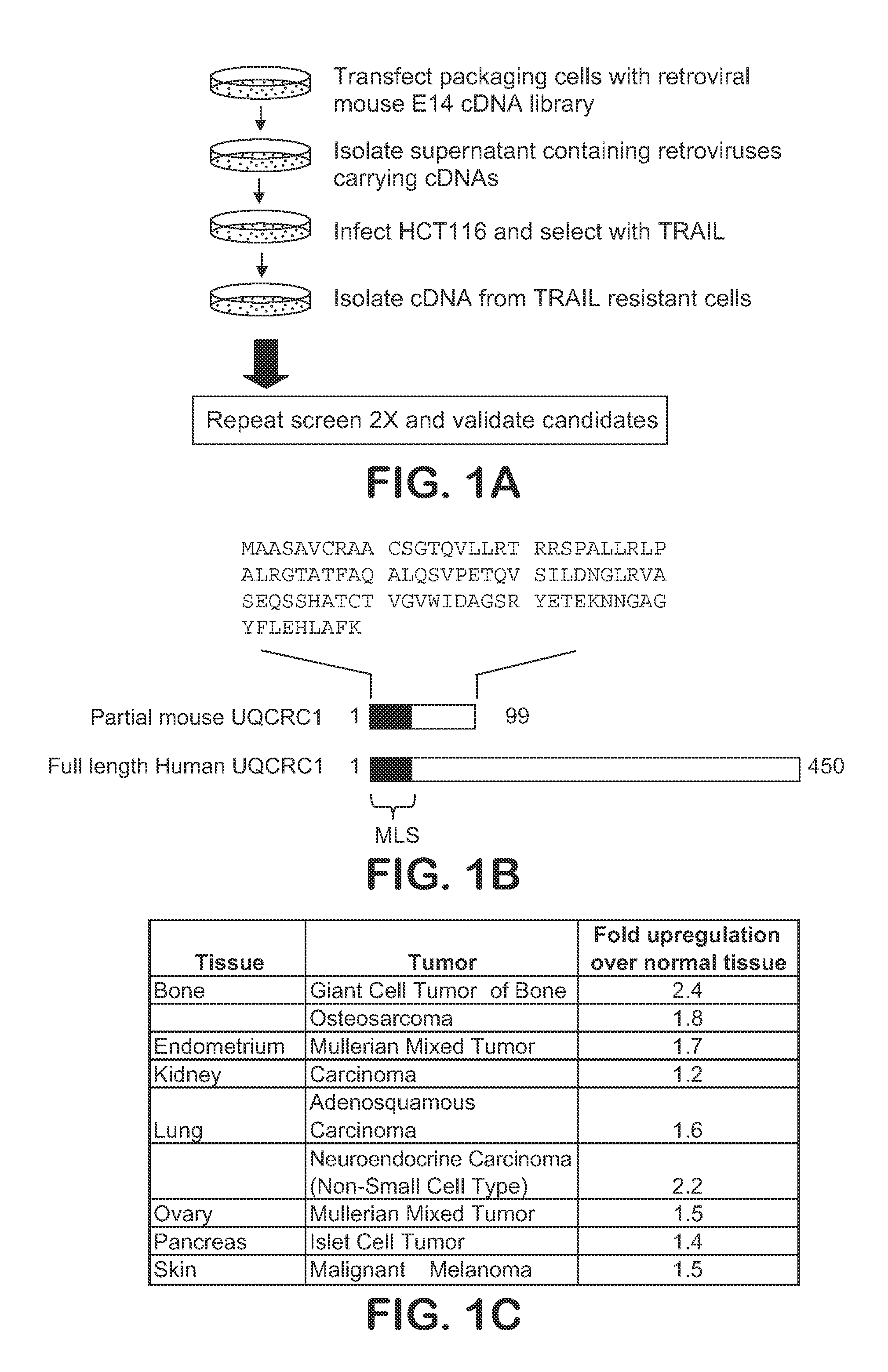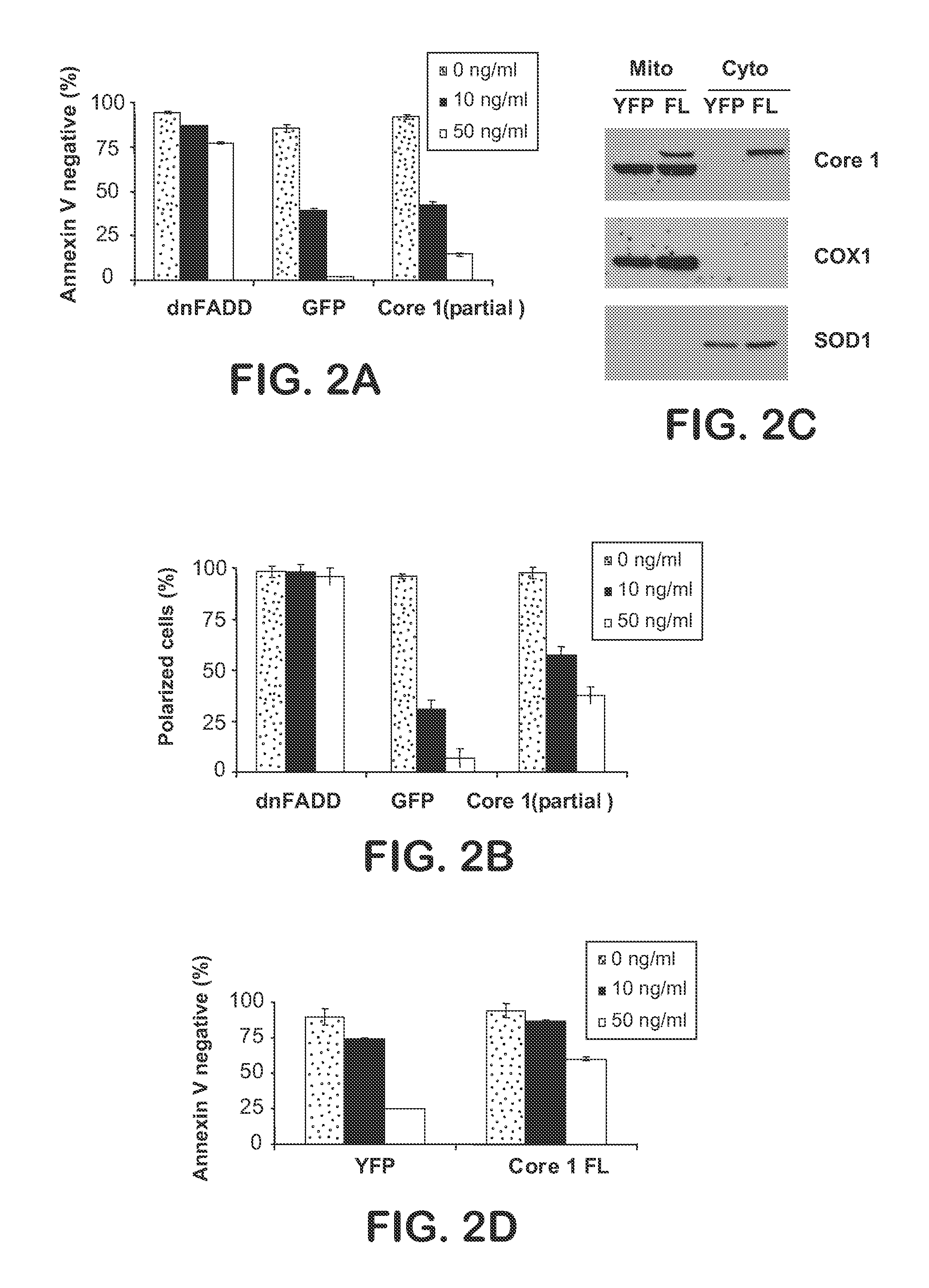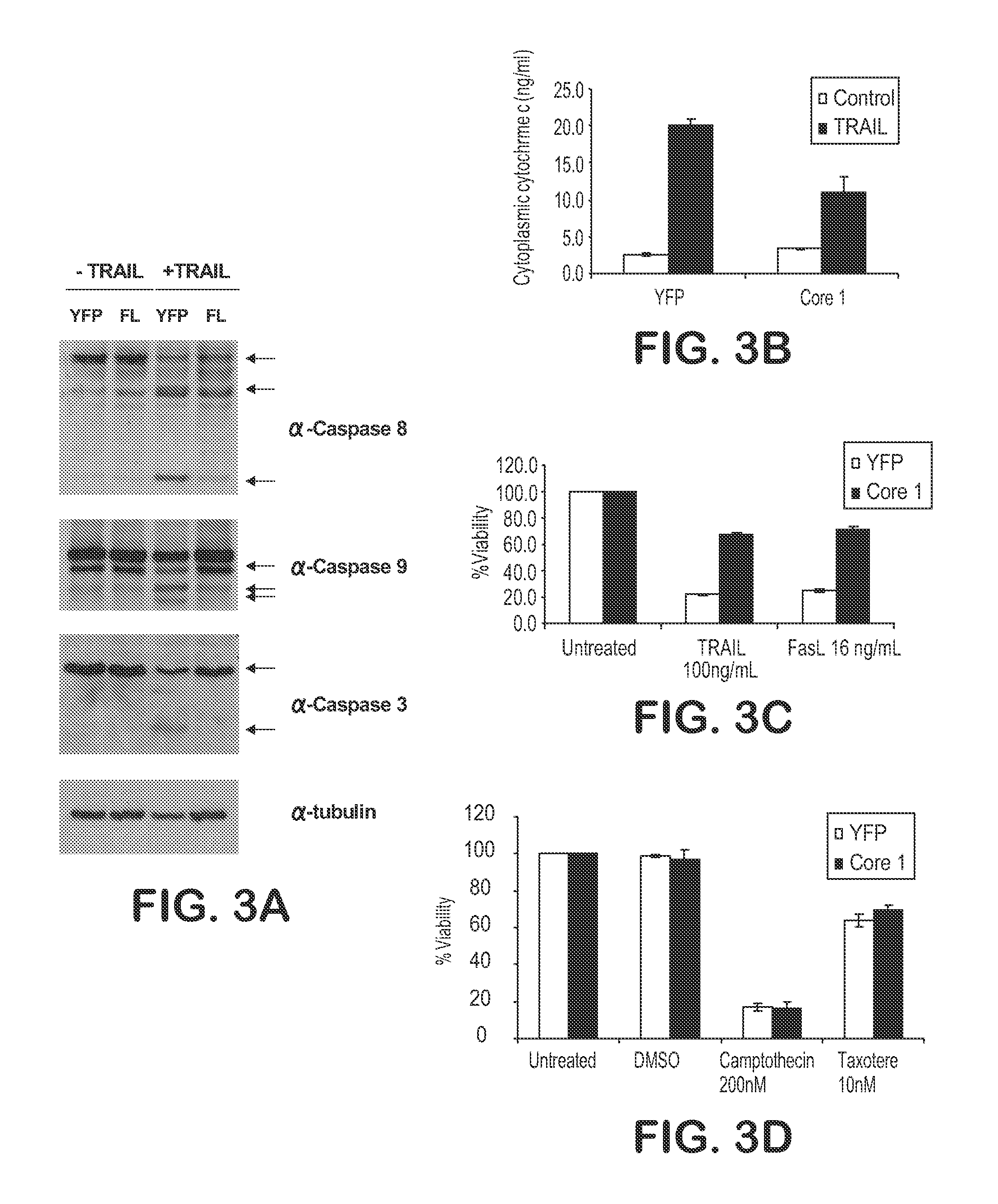Composition and Method for Treatment of Tumors
a tumor and tumor technology, applied in the field of tumor tumors, can solve the problems of uncontrolled tissue growth, use of members of the tnf superfamily, and metabolic failure of the cell's mitochondria,
- Summary
- Abstract
- Description
- Claims
- Application Information
AI Technical Summary
Benefits of technology
Problems solved by technology
Method used
Image
Examples
example 1
[0089]This example describes the discovery that Core 1 is involved in resistance to TRAIL-mediated apoptosis.
[0090]A functional genetic screen of a mouse E14 cDNA library g HCT116 colon carcinoma line, a cell line known to be sensitive to TRAIL-induced apoptosis, was conducted [FIG. 1A]. The screen identified UQCRC1, which encodes Core 1, as being involved in resistance to TRAIL-mediated apoptosis.
[0091]HCT116 cells (American Type Culture Collection, Manassas, Va.) and 293 EBNA packaging cell line (Invitrogen) were grown separately in Dulbecco's modified Eagle's Medium (DMEM) with 10% heat-inactivated fetal bovine serum (FBS) and 1% penicillin-streptomycin (Gibco) at 37° C. and 5% CO2.
[0092]A mouse embryonic day-14 retroviral cDNA library (gift of George Daley, MIT, Cambridge, Mass.) was cloned into pEYK retroviral vector and transfected into the above 293 EBNA packaging cell line using Lipofectamine (Invitrogen). Forty-eight to 72 hours after the transfection, the supernatant was c...
example 2
[0094]To further characterize the ability of Core 1 to protect against TRAIL-induced apoptosis, the pEYK vector containing the partial cDNA of UQCRC1 isolated from the screen was used to directly infect HCT116 cells. Cells expressing dominant-negative FADD (dnFADD), which inhibits the signal from the TRAIL receptors, was used as a control. Cells were treated for 48 hours with 0, 10 or 50 ng / mL of TRAIL and assayed for Annexin V, an early marker of apoptosis [FIG. 2A]. Expression of dnFADD inhibited TRAIL-induced apoptosis, with 78% of cells Annexin V negative or non-apoptotic at 50 ng / ml TRAIL. In cells expressing Green Fluorescent Protein (GFP), only 2% were Annexin V negative at 50 ng / ml, compared to 14.5% in Core 1 expressing cells, a 7 fold increase in protection from TRAIL induced apoptosis. This suggests that expression of the partial Core 1 protein provides some protection, but does not completely inhibit TRAIL induced apoptosis.
example 3
[0095]As Core 1 is a subunit of the mitochondrial respiratory Complex III, work was conducted to determine whether expression of Core 1 protects against mitochondrial depolarization, a critical step in mitochondrial mediated apoptosis. Changes in mitochondrial membrane potential during TRAIL treatment were studied using the JC-1 Assay Kit (Molecular Probes). JC-1 (5, 5′,6,6′,-tetrachloro-1,1′,3,3′-tetraethylbenzimidazolylcarbocyanine) is a cationic dye which has a diffuse green fluorescence in the cytoplasm. The accumulation of JC-1 in the mitochondria, which depends on intact, polarized mitochondria, results in the formation of red fluorescent aggregates. The ratio of green to red fluorescence was measured for the cells described in Example 2 above by Fluorescence-activated Cell Sorter (FACS) analysis. FACS is a method to sort cells based on specific cellular surface markers (e.g., red or green fluorescence). The above ratio is plotted as a percentage of polarized mitochondria.
[009...
PUM
 Login to View More
Login to View More Abstract
Description
Claims
Application Information
 Login to View More
Login to View More - R&D
- Intellectual Property
- Life Sciences
- Materials
- Tech Scout
- Unparalleled Data Quality
- Higher Quality Content
- 60% Fewer Hallucinations
Browse by: Latest US Patents, China's latest patents, Technical Efficacy Thesaurus, Application Domain, Technology Topic, Popular Technical Reports.
© 2025 PatSnap. All rights reserved.Legal|Privacy policy|Modern Slavery Act Transparency Statement|Sitemap|About US| Contact US: help@patsnap.com



